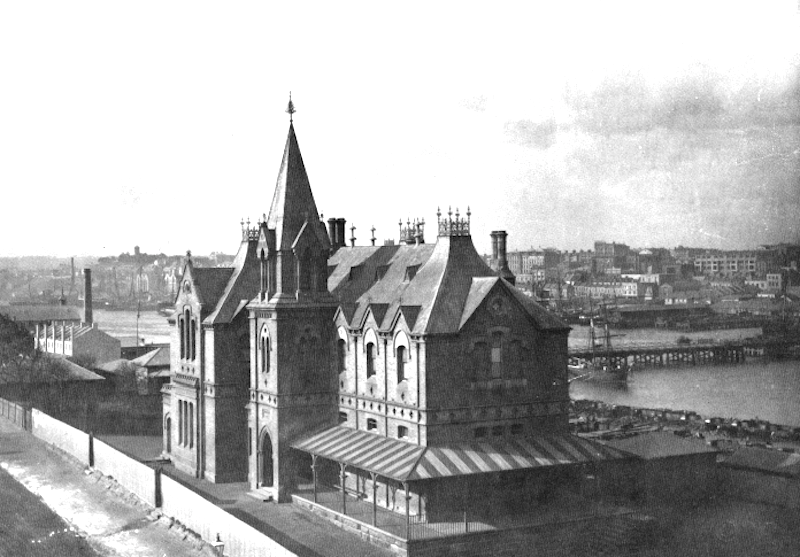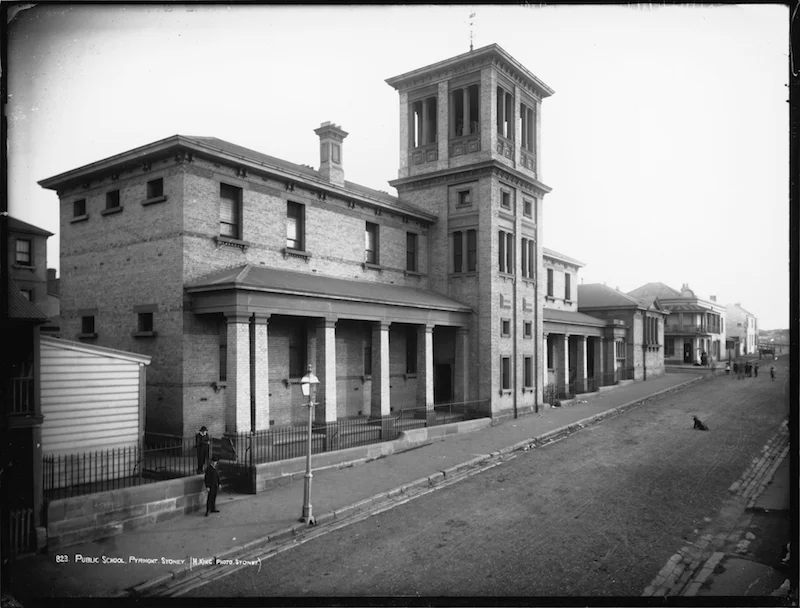Society > Schools
Schools
A few teachers took pupils in their own homes, but the first schools in Pyrmont were sponsored by the churches. The Congregational and Wesleyan (Methodist) churches built halls for Sunday (or Sabbath) Schools. Others were more ambitious: a Presbyterian school in Mount Street was followed by (Catholic) St Bede’s and (Anglican) St Bartholomew’s. All were poorly resourced.
In 1866 the Council of Education was formed to administer schools. As public education expanded, denominational schools struggled. Ultimo Public School opened in 1879 for 600 Pyrmont and Ultimo children. Partly to cope with these great numbers of children, Pyrmont Public School followed in 1884. Ultimo Public School was rebuilt on Jones Street (the Harris family donated the land) at the end of the Great War .
The Public Education Act of 1880 was an explicit attack on clerical control, denying State aid to Church schools and claiming instead to ‘put the keys of knowledge into the hands of the young’. While the Catholic Church defended its schools ferociously, Protestant churches were more acquiescent. The Presbyterian (National) School folded quietly. St Bartholomew’s rented their premises to the State while a public school was built, and in 1884 the majestic Pyrmont Public School was opened on John Street, with space for 900 children including St Bartholomew’s pupils and its teachers.
The Catholics were made of sterner stuff. St Bede’s school continued to expand and in 1924 completely rebuilt the old school, incurring a debt of £11,000 (the same amount spent on Pyrmont Public in 1884). Enrolments were consistently over 200 during the 1920s and 1930s. The school closed only in 1954.
Pyrmont Superior Public School was built to impress and equipped to compete. It gained a gymnasium and washrooms as well as facilities for woodwork and needlework. In 1921 it was publicised as a unique ‘Copy Book School’. Nevertheless numbers dropped in the 1920s as the population shrank. When it closed in 1933, the remaining pupils were sent to Ultimo.
Although education was compulsory and enforced by truancy officers, and schools competed for pupils, truancy was quite easy. Billy Young and many others grew up around these schools, but preferred the excitement and instruction in the markets, and avoided formal education altogether.
Schools In Pyrmont
Further Reading
Ultimo Public School 1870s
Pyrmont Public School 1890s
St Bede's school opening 9 May 1924
Related Items
Sources
Michael R. Matthews, Pyrmont & Ultimo: a History



